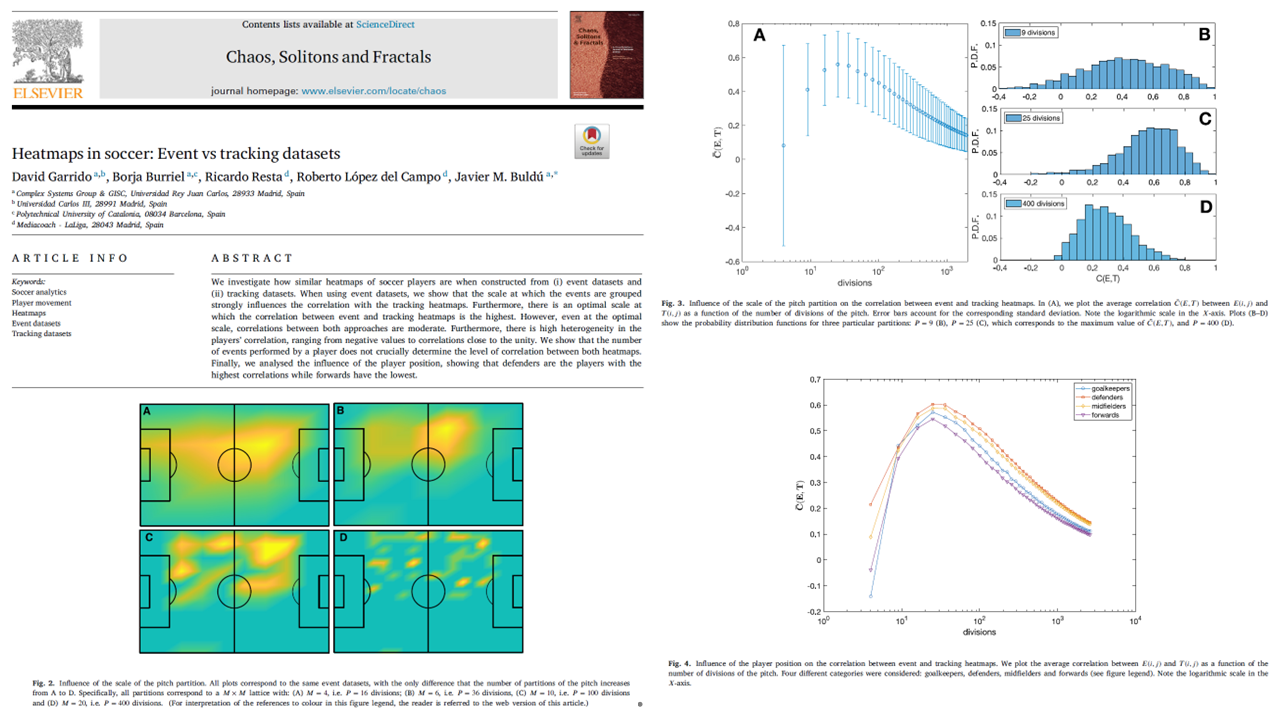
11 Nov Heatmaps in soccer: Event vs tracking datasets
Posted at 13:36h
in Paper
Heatmaps are everywhere in modern football analysis—from coaching staff to TV broadcasts. But how accurate are they, and does it matter whether they come from event data (passes, shots, duels) or tracking data (player positions every second)? This study compared both approaches in 60 LaLiga matches using Mediacoach® tracking and Opta event data.
Key insights for coaches and analysts:
- Not all heatmaps are equal: Event-based heatmaps can give a misleading picture, especially when a player has few recorded actions (e.g., strikers).
- Defenders vs. forwards: Event and tracking heatmaps overlap more for defenders (who maintain positional discipline) and less for forwards (whose movements are unpredictable).
- Scale matters: The correlation between event and tracking heatmaps is highest when the pitch is divided into around 25–36 zones, but even then the correlation is only moderate (~0.56 on average).
- Events ≠ movements: Event heatmaps reflect where a player acted, while tracking heatmaps reflect where a player moved. Both are useful, but they should not be treated as the same.
Practical applications:
- Use tracking heatmaps whenever possible for tactical evaluation and training design.
- Treat event heatmaps as complementary—they highlight action zones but do not reflect the full movement pattern.
- When scouting or opponent analysis relies only on event data (common in media platforms), remember that the tactical reality may differ.
- Forwards and creative players require special attention: their heatmaps may look dispersed or misleading if only event data is used.
Read the full paper here (DOI): https://doi.org/10.1016/j.chaos.2022.112827


